Disclaimer: This post may contain Amazon affiliate links. Sudachi earns a small percentage from qualifying purchases at no extra cost to you. See disclaimer for more info.
What is Beef Shigureni?
Shigureni (しぐれ煮) is a delicious dish that involves a quick simmer of shellfish or beef in a mixture of soy sauce and sugar, along with other ingredients such as ginger. If you’re familiar with Japanese cuisine, you might notice that tsukudani (佃煮) is an almost identical dish, however, the addition of ginger is unique to Shigureni.
This dish boasts a robust sweetness reminiscent of sukiyaki, coupled with the saltiness of soy sauce, and is typically served as a side dish or over freshly cooked rice.
This dish has a rich history, with thick-fleshed clams from Kuwana City being presented to the Tokugawa family during the Edo period (1603-1868). Originally called Shigure-hamaguri, these clams were used to make Shigureni. Today, variations of shigureni are available, including beef.
The origin of the name “shigureni” is up for debate. Still, the most widely accepted theory suggests that it comes from simmering peeled clams in tamari soy sauce, reminiscent of light rainfall, or “shigure (時雨).”
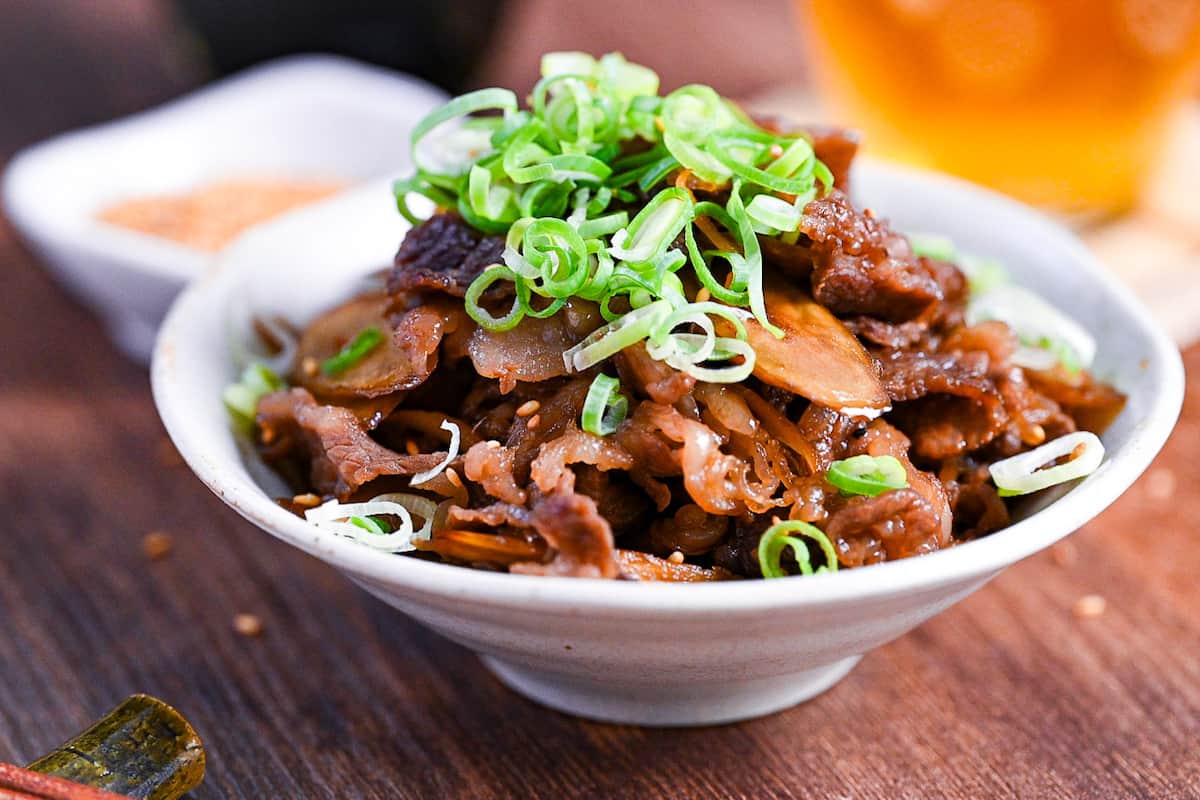

How I Developed This Recipe
Although Shigureni is a challenging dish to infuse with distinctiveness, my recipe incorporates a few personal touches. I substituted white wine and light brown sugar for sake and regular sugar to enhance its refinement and depth.
Moreover, I prevent the beef from becoming too tough by briefly blanching it separately in hot water and incorporating it into the simmered vegetables at the end.
Enjoy the elegant and rich finish of beef shigureni!
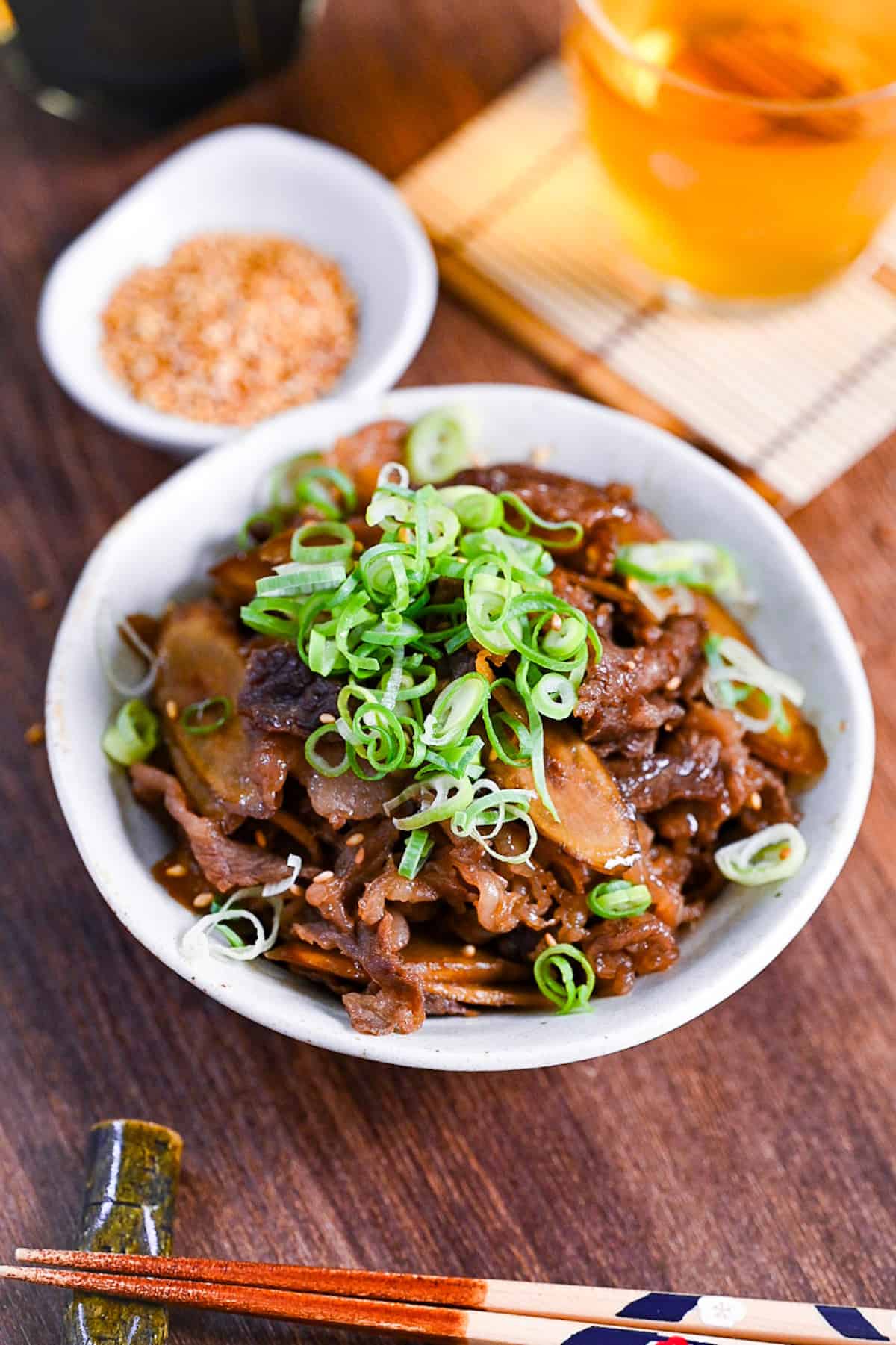
Ingredients & Substitution Ideas
- Thinly sliced beef: While fatty Wagyu beef slices like those used in Shabu shabu or Sukiyaki, are ideal, they aren’t mandatory. I’ve opted for end-cut pieces of fatty Wagyu beef. Since these cuts will be further processed, they are an economical choice. If not using Wagyu, aim for thin slices with marbling fat like short plate (belly). I do not recommend using lean cuts for this dish.
- Burdock roots (gobo): Though I value its texture in the dish, it’s optional—especially if it’s hard to get in your local area. Other vegetables that could be used instead include carrots, renkon (lotus root), or mushrooms.
- Ginger: A cornerstone ingredient for shigureni that adds a refreshing taste and softens the flavor of the meat.
- White wine: For a more traditional approach, sake is the alternative.
- Soy sauce: If you want a budget-friendly yet authentic option, Kikkoman soy sauce won’t disappoint you. For insights into selecting the perfect soy sauce in Japanese cooking, check out our guide to soy sauce.
- Sugar: Everyday sugar serves well, though I’ve gravitated towards light brown cane sugar in my recent cooking.
- Mirin: When in the market for mirin, “hon mirin” (本みりん) is the go-to for unparalleled flavor. Hinode Hon Mirin stands out both in quality and affordability. Dive into my post on the 20 Most Useful Condiments and Seasonings for Japanese Cooking for a broader range of suggestions.
- Sesame oil: This lends a delicate nuance to the dish. Kadoya’s sesame oil comes with my stamp of approval.
- Chopped green onion: Perfect as a finishing garnish.
Curious about the exact brands and products that bring my recipes to life? Discover the brands and ingredients behind my recipes at the Sudachi Amazon Storefront. Explore my handpicked pantry essentials and find your next kitchen favorites!
Jump to Full Recipe Measurements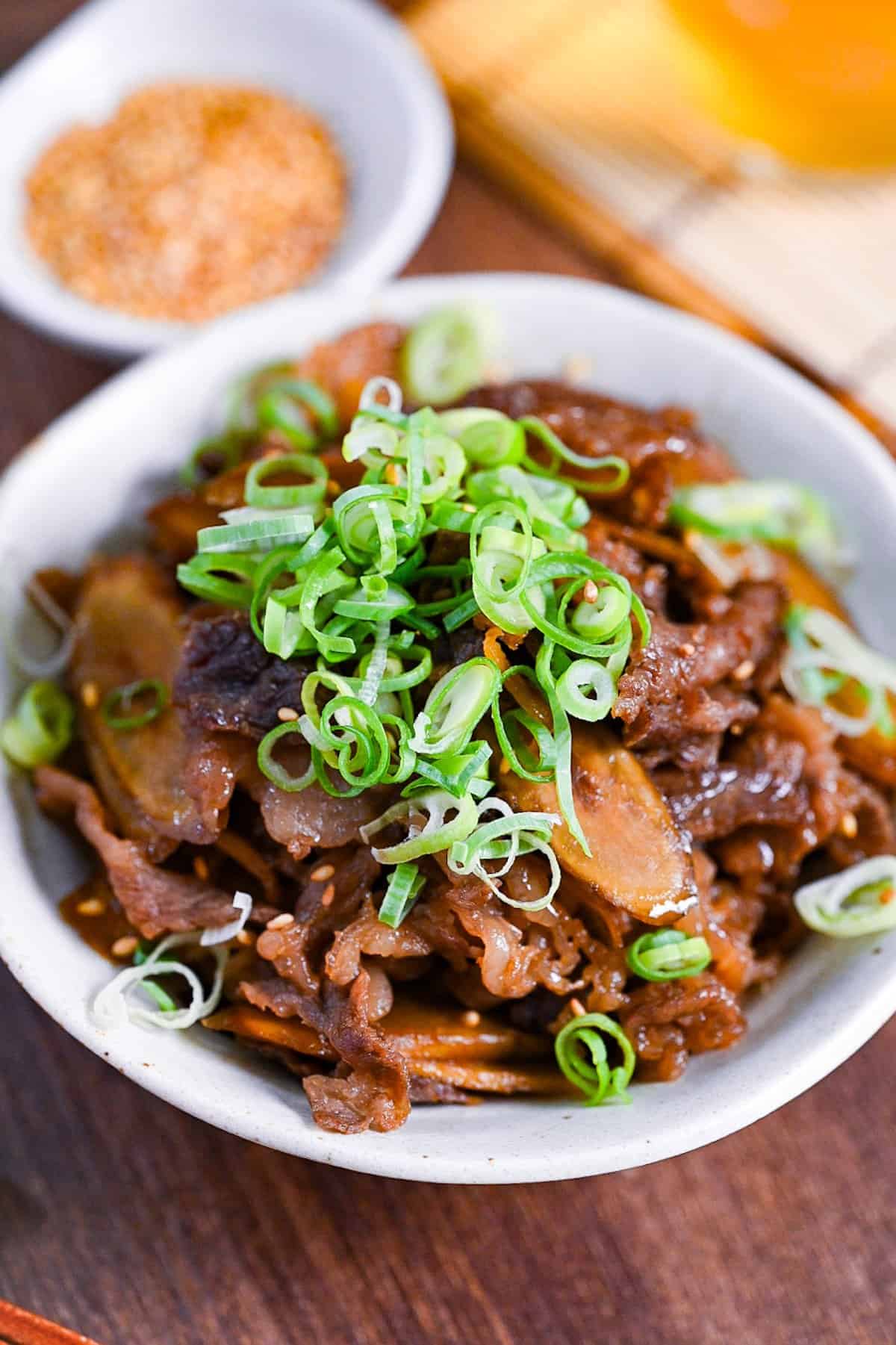
Visual Walkthrough & Tips
Here are my step-by-step instructions for how to make Beef Shigureni at home. For ingredient quantities and simplified instructions, scroll down for the Printable Recipe Card below.
Wash the surface of the burdock and then scrape off the skin using the back of a knife or a steel scrubber. The skin of burdock root is very thin so avoid using a peeler as this can waste a lot of the vegetable itself.
Once the skin has been removed, diagonally cut into 2mm thick slices. Cutting diagonally will create a larger surface area that will absorb more flavor. Place the pieces in a bowl of cold water and add a dash of rice vinegar. This prevents discoloration and removes some bitterness.
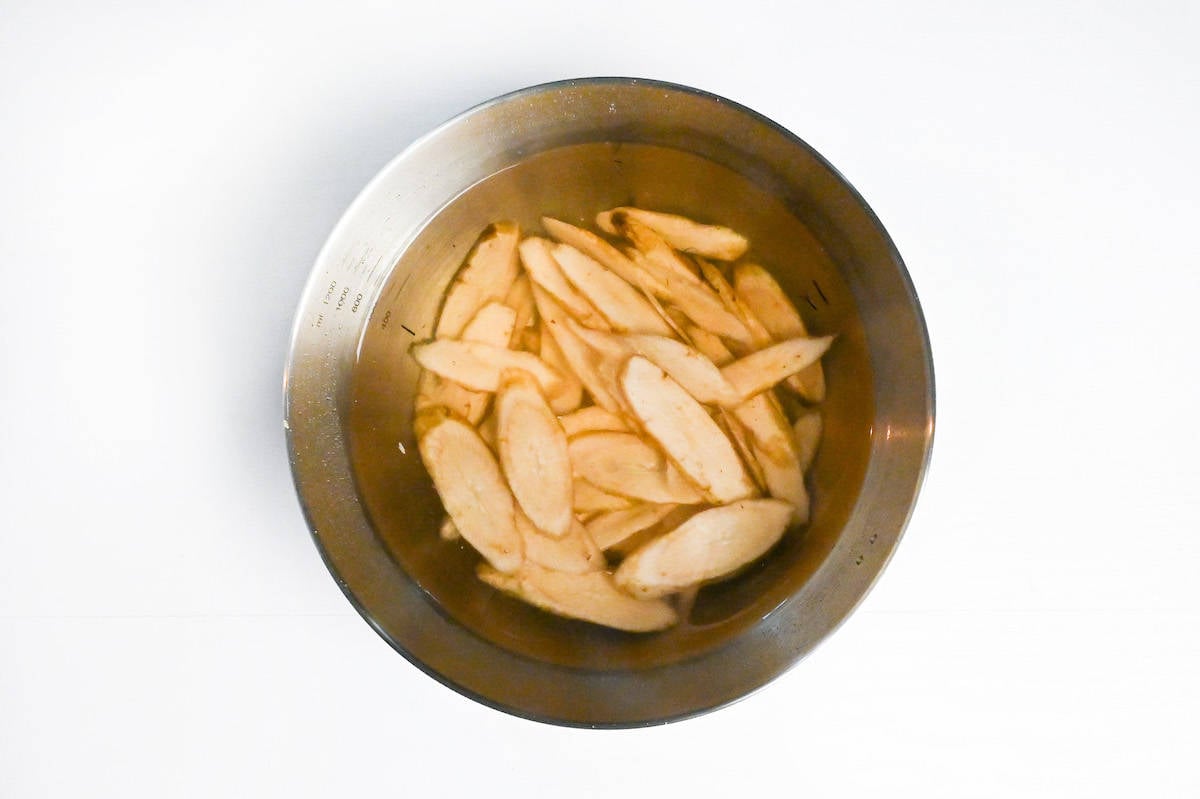
Scrape the skin off the ginger using a spoon and then cut into thin shreds (julienne). Place the ginger in a separate bowl of cold water to soften the flavor slightly. The ginger should not be too overpowering in shigureni.
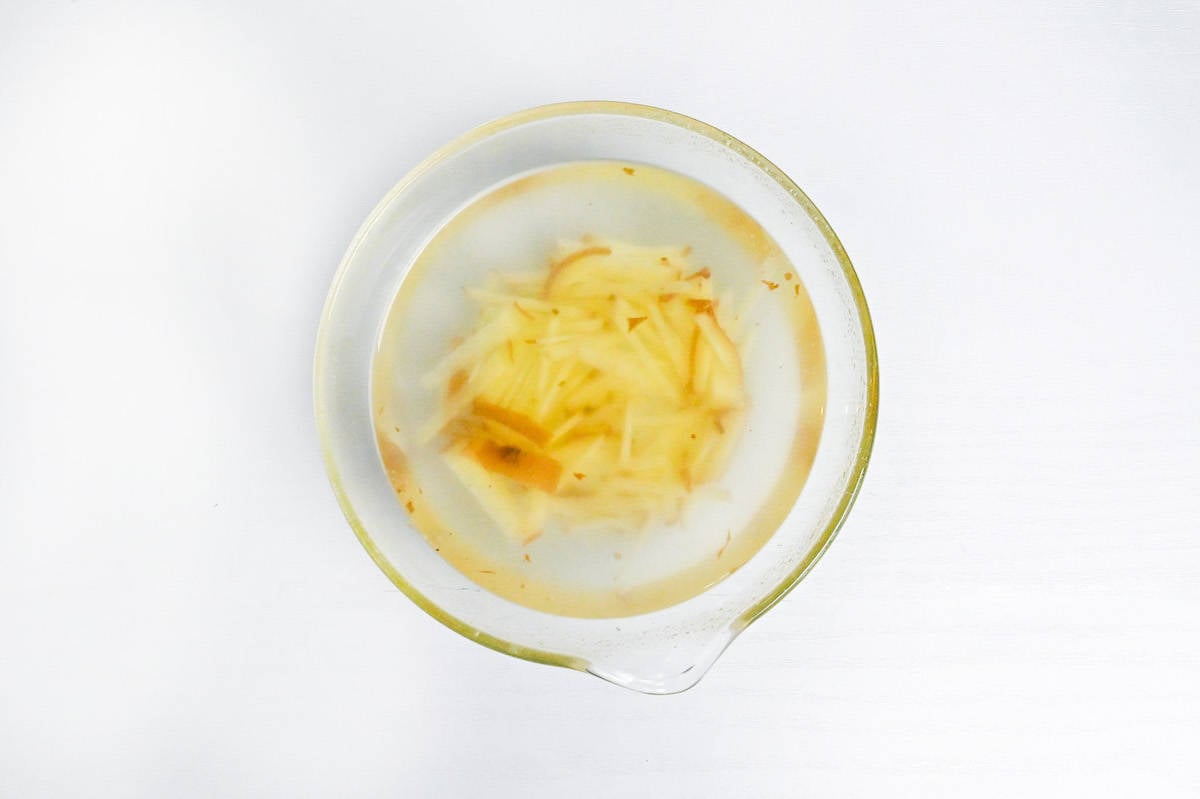
I recommend purchasing beef that has already been thinly sliced, however if it is hard to come by where you live, buy a block and freeze until firm (not frozen) and thinly slice it yourself using a sharp knife.
Cut the thinly sliced beef into approximately 2cm (1 inch) pieces.
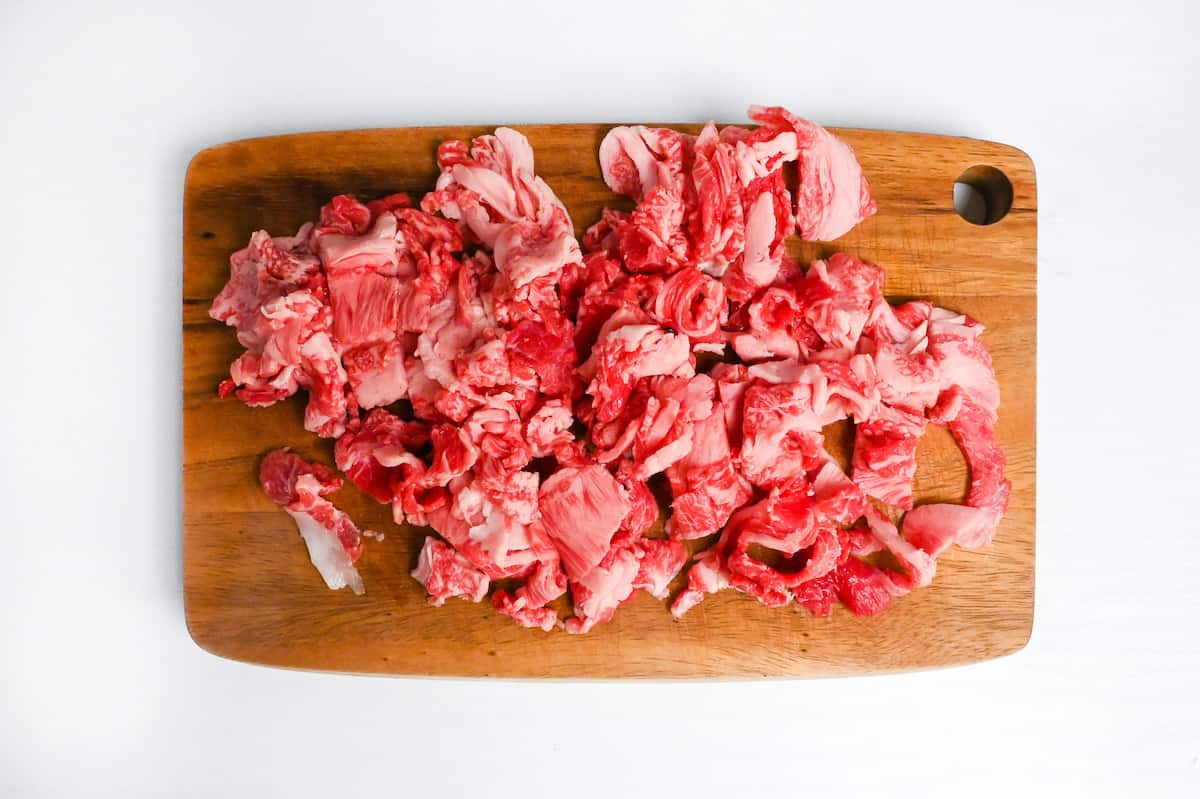
Bring a pot of water to a boil and then turn off the heat. Prepare a bowl of ice cold water ready for later.
Blanch the beef for about 30 seconds or until lightly cooked. This technique mimics the cooking method of Shabu Shabu and keeps the meat soft and tender. Be careful not to overcook (it will be cooked further later).
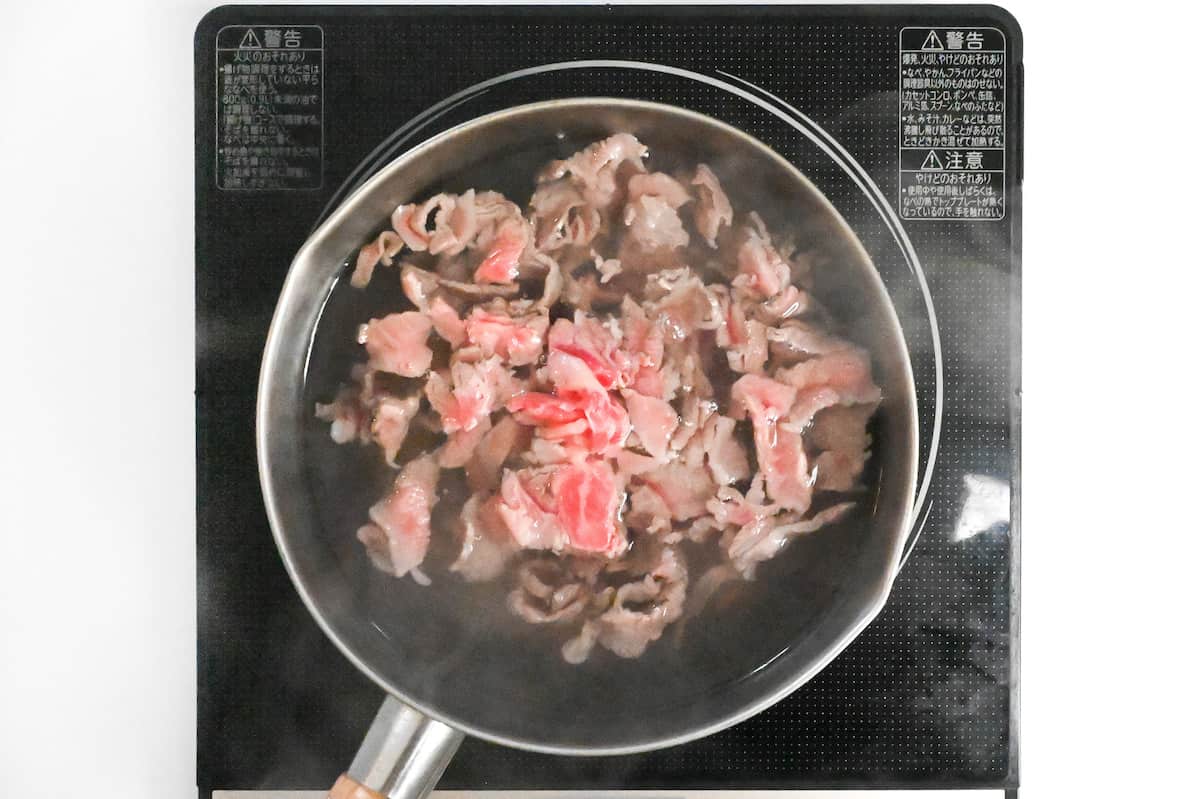
Drain the water and transfer the beef to the bowl of ice-cold water. Let it cool for a few minutes and then drain. Set aside for later.
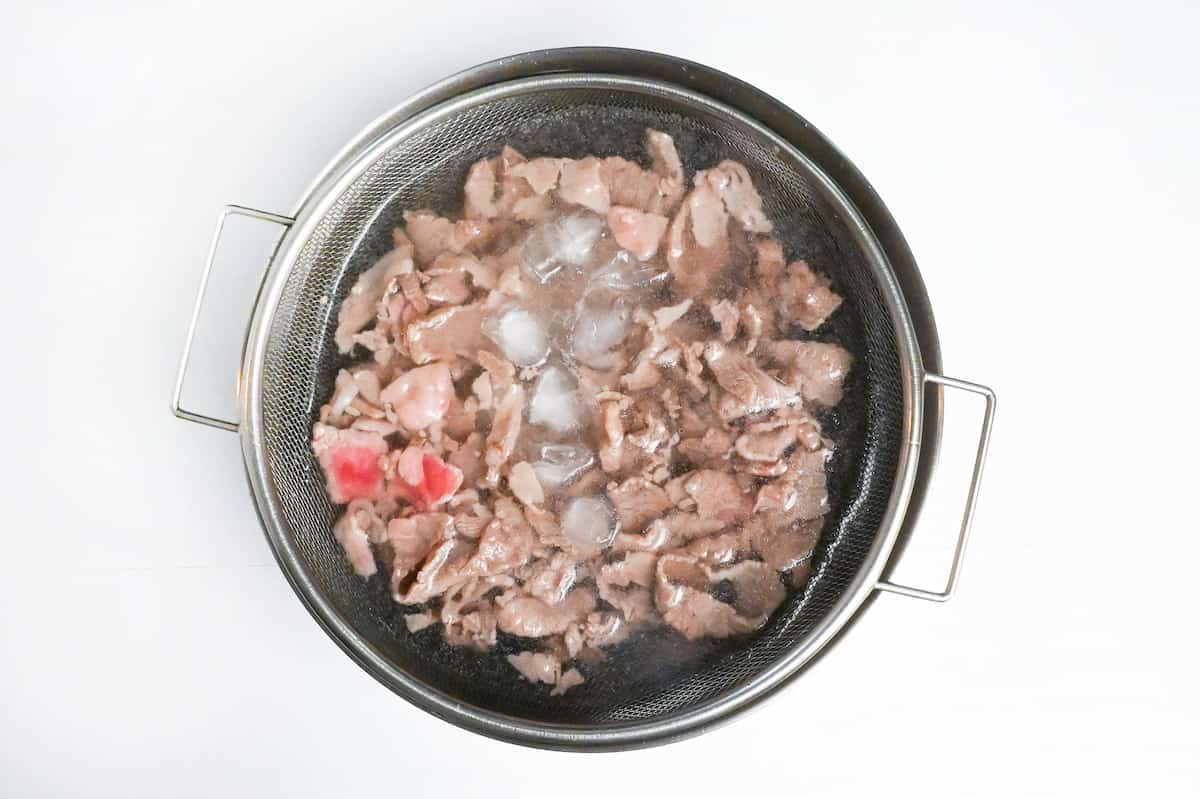
Heat a frying pan on medium and add a generous drizzle of sesame oil. Drain the burdock root and at it to the hot pan, stir fry for 2 minutes.
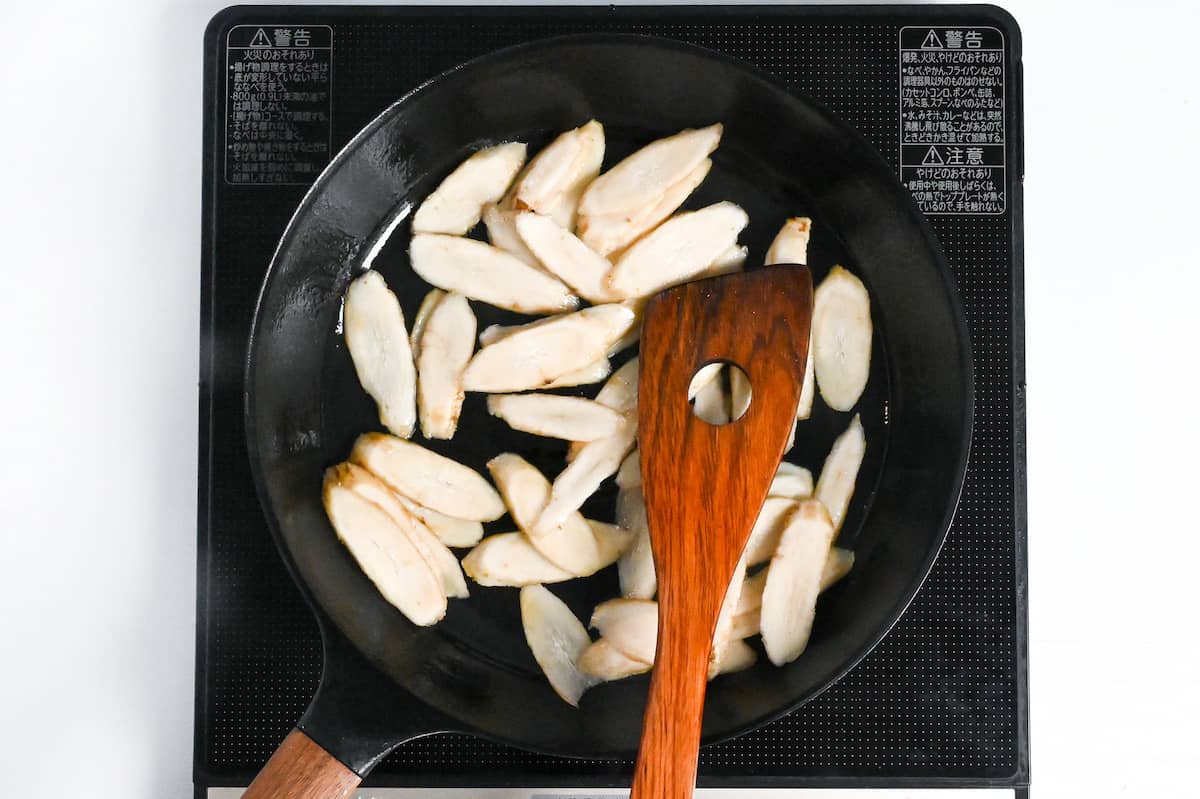
Drain the ginger and add it to the pan along with white wine, soy sauce, light brown sugar and mirin. Mix well and simmer over a medium heat until reduced by two-thirds.
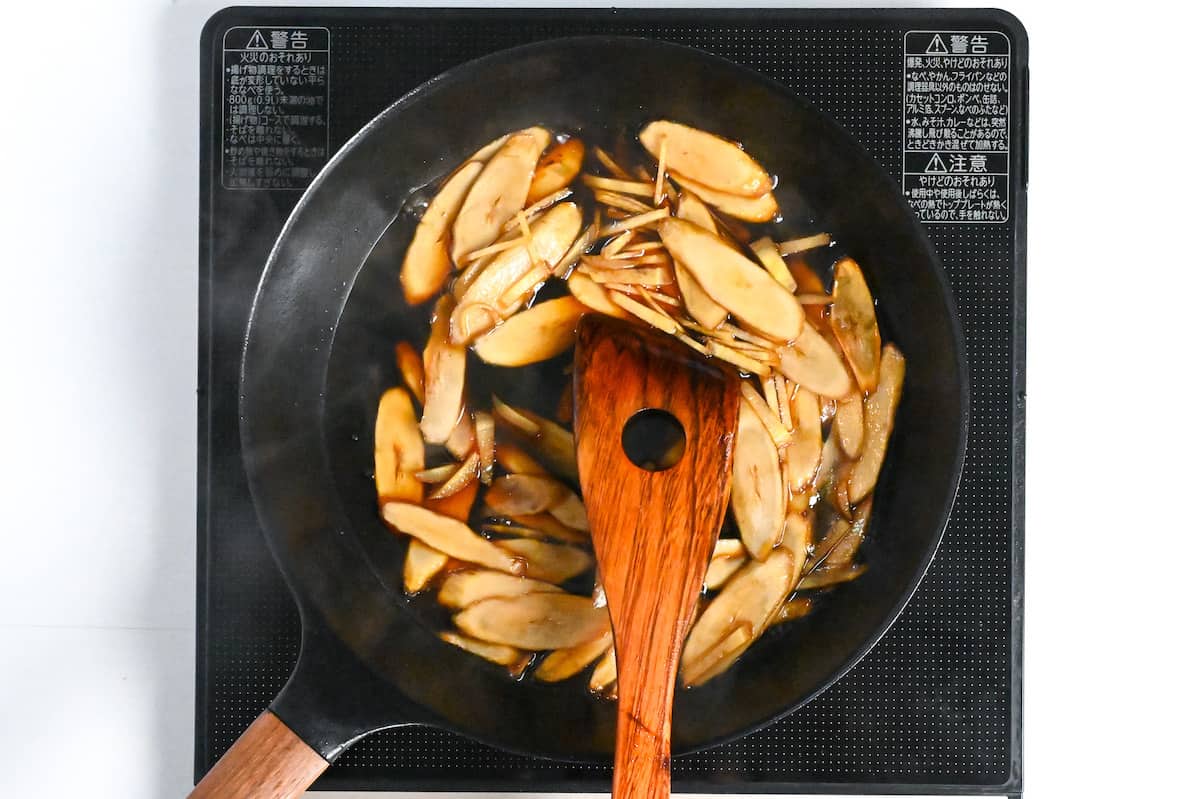
Add the beef to the pan and increase the heat to medium-high.
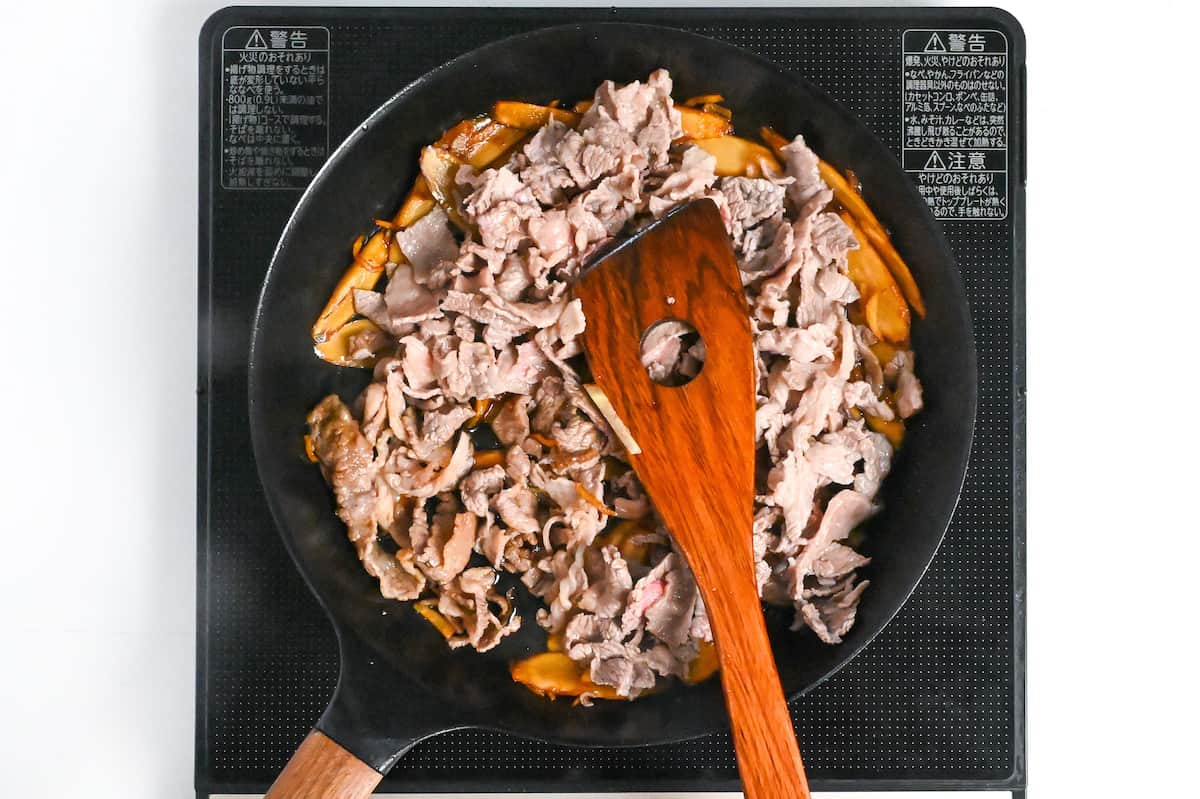
Stir fry everything together until the liquid is more or less gone and the meat is coated, then turn off the heat.
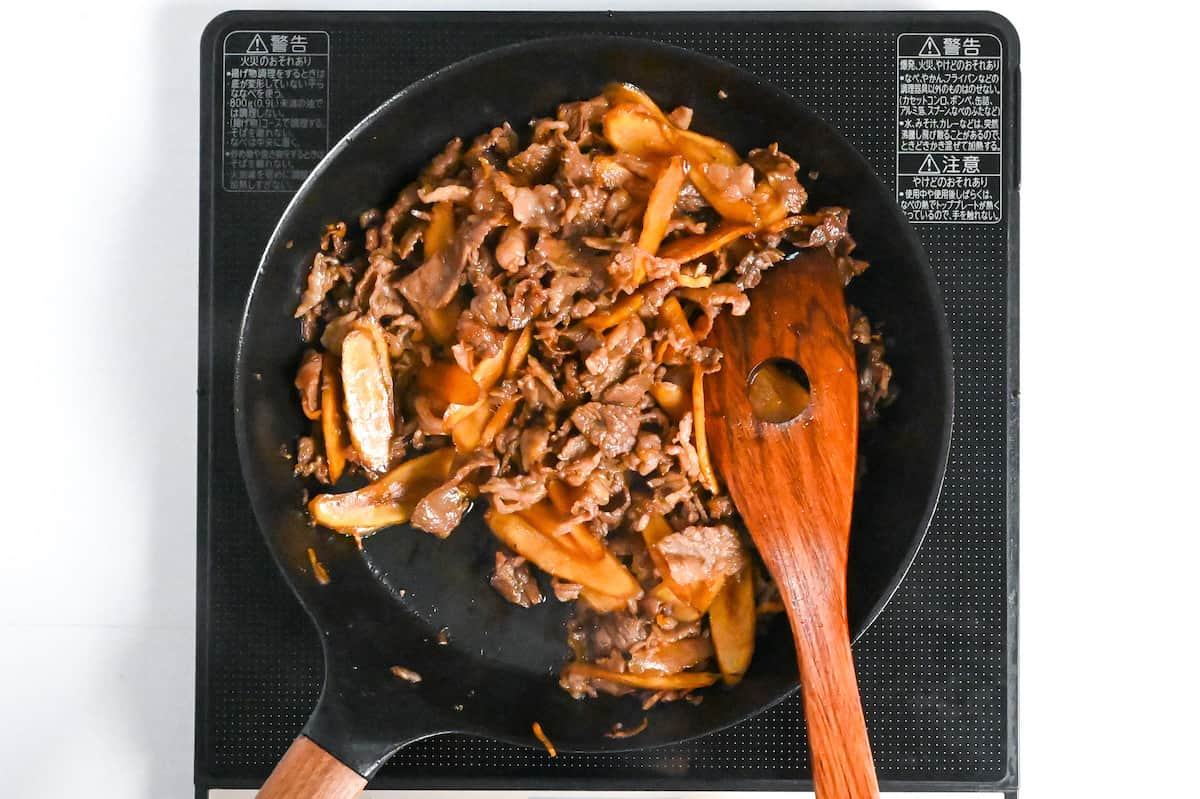
Transfer to serving bowls and top with a sprinkle of chopped green onion and sesame seeds (optional).
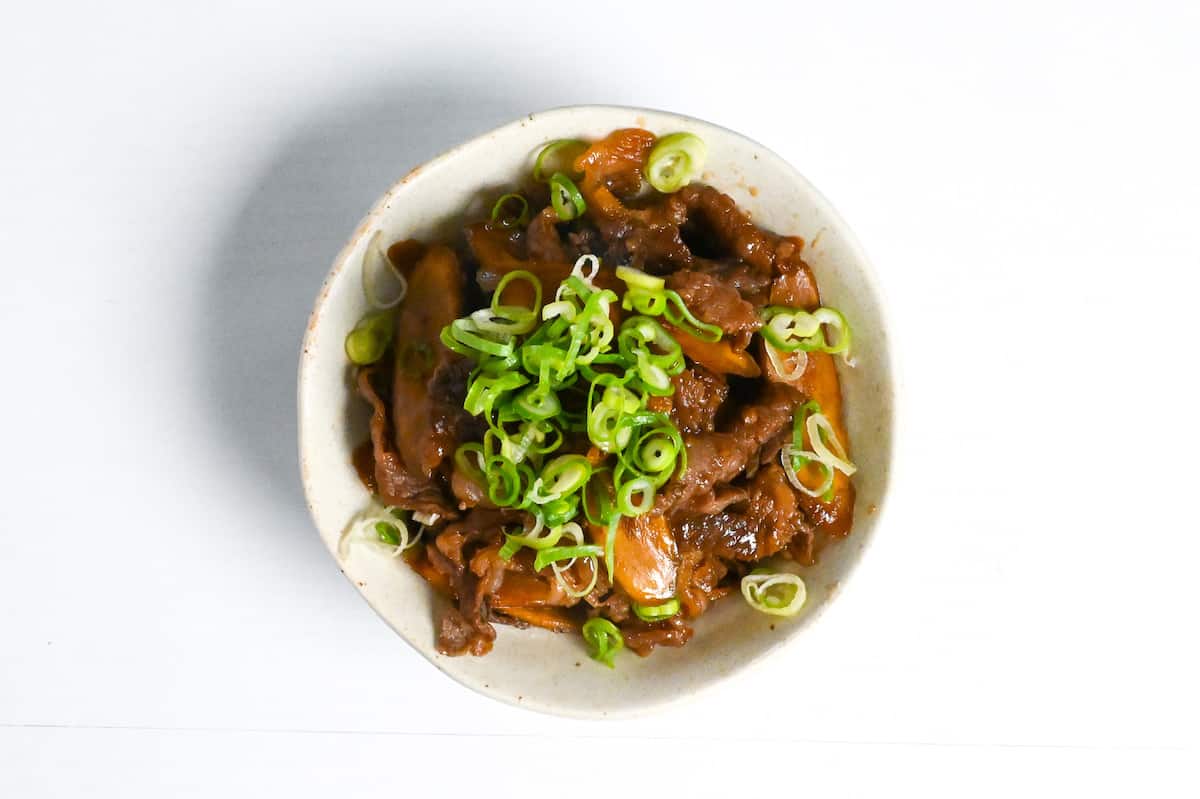
Enjoy!
Jump to Full Recipe MeasurementsHow to Store
Beef shigureni can last up to a week in the fridge and a month in the freezer. Thanks to its bold flavor profile, mostly comprised of soy sauce and sugar, it can keep well for an extended period.
Nevertheless, it’s best to consume it promptly, if possible.
Storage Summary
Room temperature – Not recommended.
Refrigerated – Up to 1 week.
Frozen – Up to 1 month.
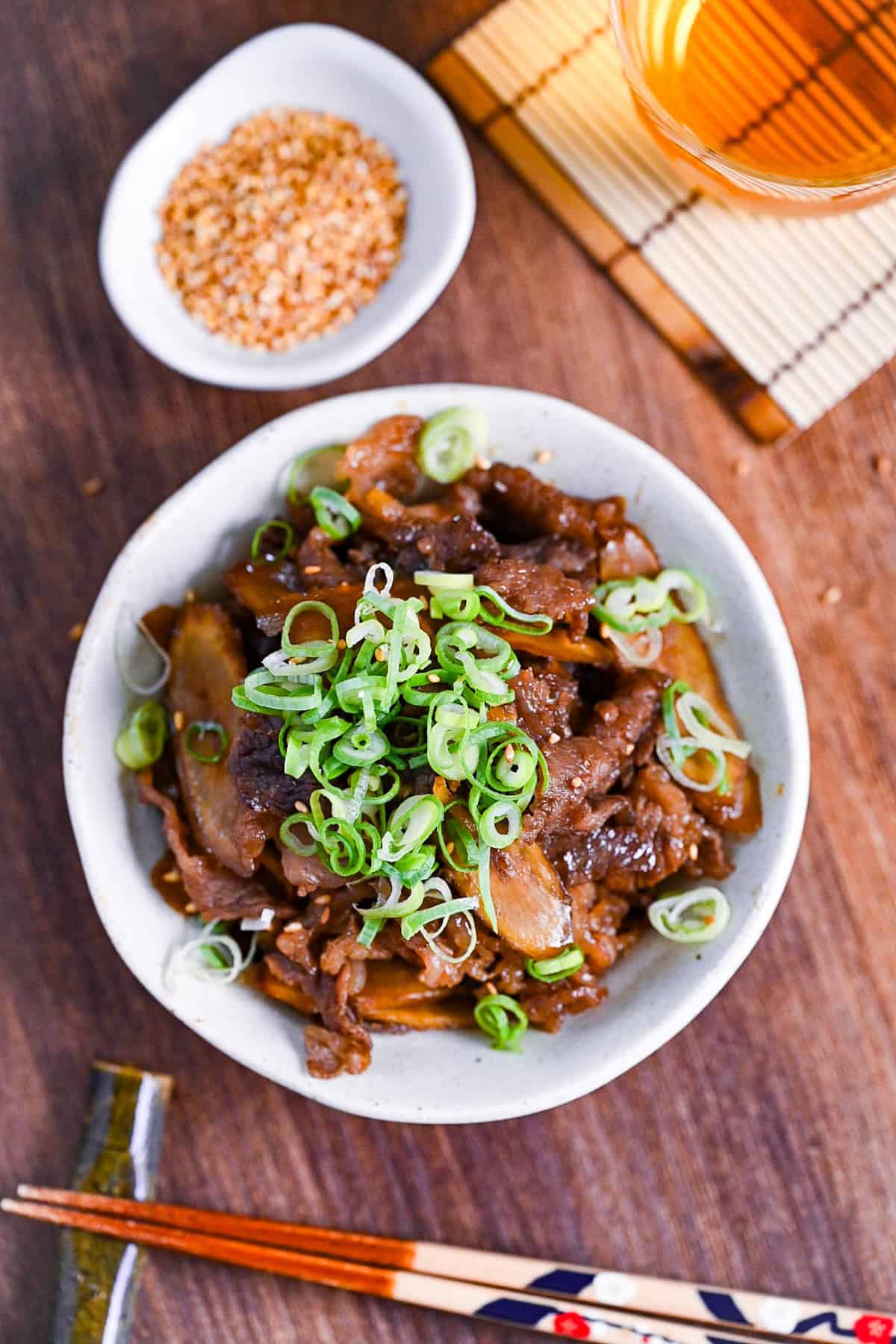
I hope you enjoy this Beef Shigureni recipe! If you try it out, I’d really appreciate it if you could spare a moment to let me know what you thought by giving a review and star rating in the comments below. It’s also helpful to share any adjustments you made to the recipe with our other readers. Thank you!
More Japanese Side Recipes
- Japanese Hijiki Seaweed Salad (Hijiki no Nimono)
- Dashimaki Tamago (Japanese Rolled Omelette with Dashi)
- Simmered Kiriboshi Daikon Radish
- Japanese Simmered Pumpkin (Kabocha no Nimono)
Want more inspiration? Explore my Side Dish Roundup Post for a carefully selected collection of tasty recipe ideas to spark your next meal!
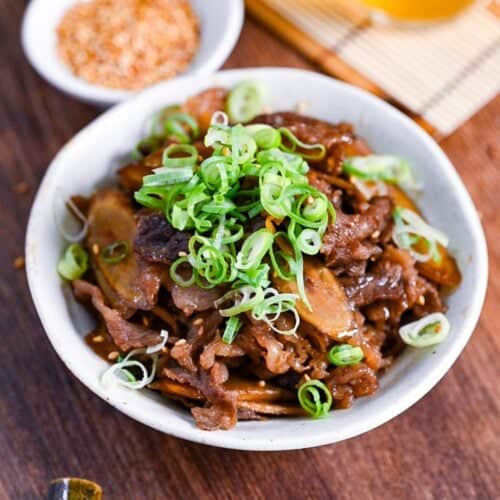
Beef Shigureni (Simmered Wagyu with Ginger and Burdock Root)
Ingredients
- 150 g burdock root (gobo) (gobo)
- 1 dash rice vinegar
- 20 g ginger root
- 250 g thinly sliced beef preferably with marbling fat
- ½ tbsp toasted sesame oil
- 4 tbsp white wine
- 3 tbsp soy sauce
- 2 tbsp light brown sugar
- 1 tbsp mirin
- finely chopped green onions to garnish
- sesame seeds to garnish
Instructions
- Peel 150 g burdock root (gobo) and diagonally slice about 2mm thick. Submerge in a bowl of cold water with 1 dash rice vinegar and set aside for later.

- Peel 20 g ginger root and julienne. Submerge in a separate bowl of cold water and set aside for later.

- Bring a medium-sized pot of water to a boil. While you wait, cut 250 g thinly sliced beef into 2cm (1 inch) pieces and prepare a bowl of ice-cold water.

- Once the water is boiling, turn off the heat and blanch the beef by submerging for about 30 seconds or until lightly cooked (it should still be a little pink).

- Use a sieve to drain the hot water and quickly transfer the beef to the bowl of ice-cold water to halt the cooking process and cool for a few minutes. Once cooled, drain and set aside for later.

- Heat a frying pan on medium and add ½ tbsp toasted sesame oil. Once hot, drain the burdock root and add it to the pan. Fry for 2 minutes.

- Drain the ginger and add it to the pan along with 4 tbsp white wine, 3 tbsp soy sauce, 2 tbsp light brown sugar and 1 tbsp mirin. Mix well and simmer over a medium heat until reduced by two-thirds.

- Add the blanched beef to the pan and increase the heat to medium-high.

- Stir fry everything together until the liquid has almost gone and the beef is coated in the sauce, then turn off the heat.

- Transfer to serving bowls and garnish with finely chopped green onions and sesame seeds (optional).

- Enjoy!
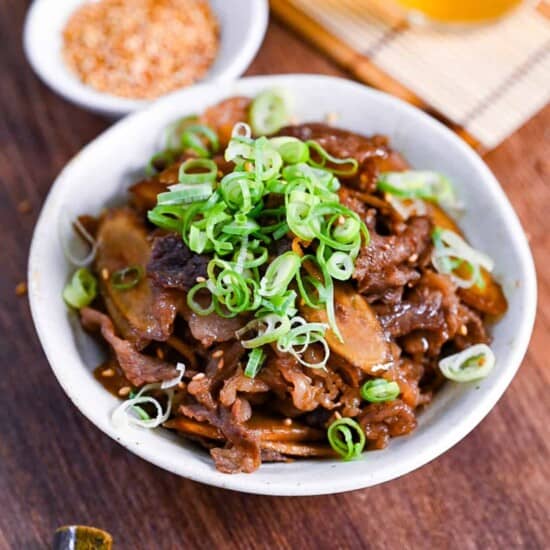


Leave a rating and a comment